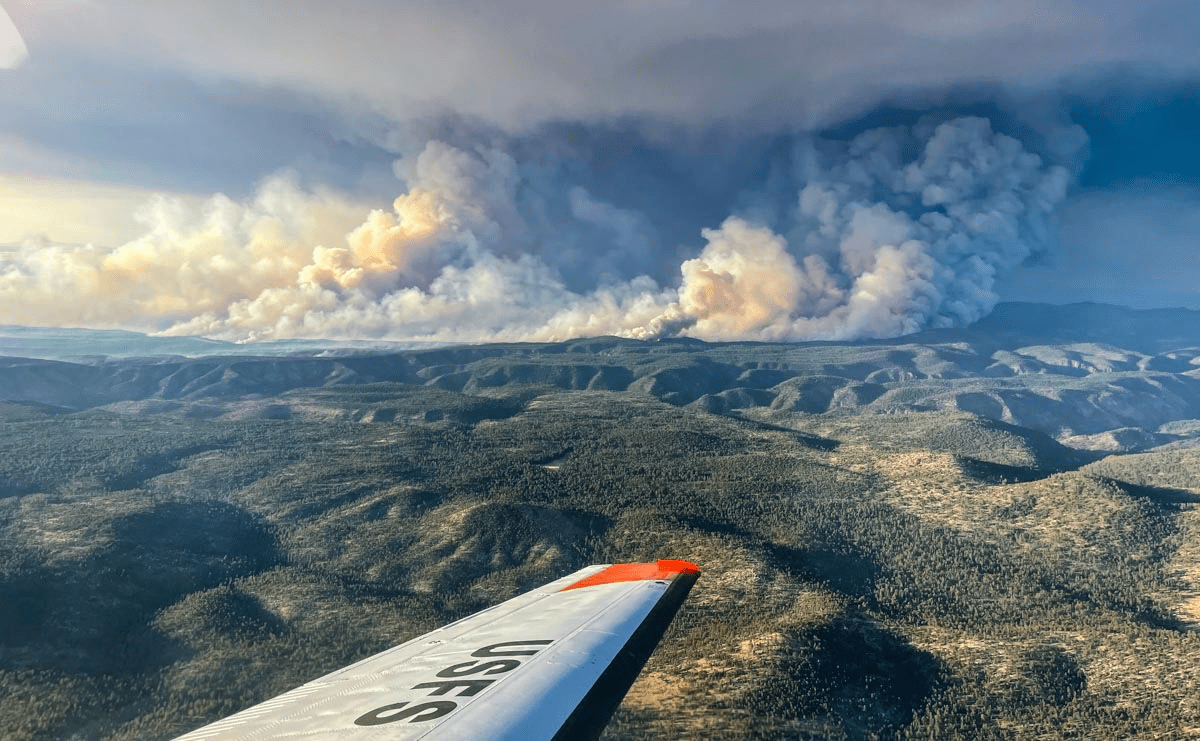A team of scientists from NOAA’s Satellite and Information Service (NESDIS) and South Dakota State University has developed more accurate forecasts to predict the impacts of wildfire smoke on air quality.
The efforts to create these better forecasts stemmed from the Disaster Relief Act of 2019, in which NOAA’s Office of Oceanic and Atmospheric Research (OAR), the National Weather Service (NWS), and NESDIS partnered to deliver improved forecasts of wildfire smoke impacts on air quality.
The method known as Regional Hourly Advanced Baseline Imager (ABI) and Visible Infrared Imaging Radiometer Suite (VIIRS) Emissions, or RAVE, combines observations from instruments on NOAA’s geostationary and polar-orbiting weather satellites to calculate estimates of wildfire emissions. The instruments – the ABI on the Geostationary Operational Environmental Satellite (GOES) program’s, GOES-16 and GOES-17, and the VIIRS on the Joint Polar Satellite System (JPSS) program’s NOAA-20 – can detect the heat signature, or fire radiative power, from wildfires.
This attribute makes them ideal for monitoring air quality because wildfires are a source of harmful air pollutants including smoke, various volatile and semi-volatile organic compounds, and nitrogen oxides that form ozone and particulate matter. Fine particulate matter (PM2.5), which is 2.5 micrometers or less in diameter – about 30 times smaller than the diameter of an average human hair – is especially concerning because those particles penetrate deep into human lungs and cause various upper respiratory diseases, including premature death.
Poor air quality is linked to hundreds of thousands of premature deaths in the United States annually. Globally, smoke from landscape fires accounts for close to 340,000 deaths annually. And, in a study recently published in Lancet Planetary Health, short-term exposure to wildfire-related PM2.5 pollution was linked to an elevated risk of death.
In a recent announcement on wildfire incidents, the National Interagency Fire Center (NIFC) shared that, “through mid-May of 2022 there have been over 25,000 wildfires consuming 1.4M acres, surpassing the 10 year annual average for the number of fires during this same timeframe by over 6,000 fires. Climate change will only exacerbate heat and drought, which along with severe storms make wildfire conditions worse.”
Dr. Shobha Kondragunta, a physical scientist at NESDIS and lead for the RAVE project, said earlier fire emission models were limited in their capabilities. “This is because polar orbiting satellites, which circle the Earth from pole to pole, can only view portions of the globe at a time and this limits the information they can glean from a quickly evolving wildfire. The addition of GOES satellite data, however, helps resolve this issue.”
Source link
abigail.reid www.noaa.gov

